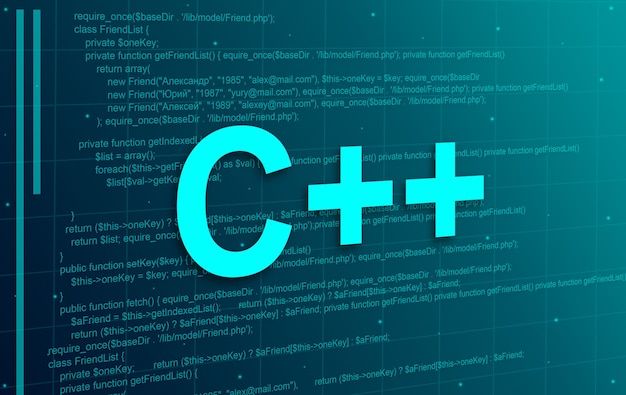Cloud Native Platform Engineering
Application Modernization
- RAPINNO OFFERS SIMPLE AND ELEGANT SOLUTIONS THAT TRANSFORM AND STREAMLINE LEGACY APPLICATIONS AND INFRASTRUCTURE AT SPEED AND SCALE
the challenge
Modern Applications Drive Agile, Digital Businesses
Organizations are under intense pressure today to modernize their business applications in the cloud to increase their agility, accelerate time to market, reduce costs and, in some cases, reinvent the way they do business. And it’s not just startups and market innovators. Nearly every business will need to embrace the cloud and modernize legacy applications to compete in the future.
the challenge
Transform Legacy Applications for the Digital Age
Rapinno’s application modernization offerings enable enterprises to increase business agility and resilience with scalable cloud-native applications.
We help development teams lay the foundation for cloud-native architecture with a continuous delivery model that modernizes complex legacy systems. Our all-in-one services include cloud enablement, industry-specific development solutions, ongoing application management, and continuous improvement to equip businesses to:
- Drive shorter release cycles and faster time-to-market for new digital offerings
- Overcome organizational cultural barriers to increase cloud-native adoption
- Better position themselves to adjust to the continuously changing needs of the business
Our Offerings
End-to-end Cloud-Native Development SERVICES
We support a variety of use cases:
Re-Architecting
Rapinno enables development teams to leverage the full power of public cloud with minimum changes to applications by adopting cloud-native services as replacements for data, streaming, API management, logging, monitoring, and alerting. Rapinno also helps with re-architecting — migrating from monolithic to Microservices (or serverless) architecture to boost agility and improve business continuity. The result is:
- Reduced cost and increased scalability and reliability with minimal refactoring or rewriting of applications
- Improved elasticity and responsiveness of applications
- Continuous integration, continuous delivery, and continuous testing for applications
Rapinno equips delivery teams to build responsive, resilient, self-healing, secure and auto-scalable serverless applications, without worrying about capacity planning and monitoring. By leveraging the managed concurrency and routing provided by the public cloud, we enable applications to:
- Scale seamlessly through unpredictable traffic and remain resilient in the face of unexpected failures
- Reduce costs during idle time
Container Adoption
When serverless isn’t an option, Rapinno leverages containers to deploy modern, complex, distributed applications. Containers typically require minimal changes to applications, making them an ideal next stage for applications not appropriate for major refactoring. And containers deliver multiple benefits, including:
- Reduced complexity and scale by leveraging the advantages of the container ecosystem and orchestration frameworks such as Kubernetes and ECS
- Increased application portability and improved developer workflows by creating isolated sandboxes for each component
Re-Hosting
Rapinno can “lift and shift” a part of an MiM application or the complete application — from on-premise or existing cloud environment to public cloud — with no changes to the application. This provides several advantages:
- Reduced cost and faster go-to-market
- Increased elasticity, higher availability, scalability and reliability
- Continuous integration, continuous delivery and continuous testing
- Increased infrastructure automation
Customized Application Development Environments
Rapinno can also customize your application development environment with advanced capabilities and specialty practices:
- Automated governance and security
- Advanced app orchestration
- Blue/green deployments
- Self-healing patterns
- Advanced operation metrics
- App and infrastructure scaling patterns
THE OUTCOMES WE DELIVER
Simplified Application Modernization That Delivers for Digital Users
Rapinno Application Modernization services deliver significant business advantages:
Speed
Faster time-to-market and increased release velocity
Quality
Unique use experiences with higher quality due to minimal production code with defects
Operational Efficiency
Reduced support needs by eliminating technical debt
Agility
Flexibility to create new features and services that align with current business needs and future goals; resulting in additional revenue streams
Our methodology
how we do it
how we do it
Our approach
Our Cloud Strategy engagements involve a two-step process
Step 1
Discovery & Solution Ideation – 4 Weeks
Technical discovery and future state planning technical discovery, business requirements, mind map the requirements with digitalization journey, risk assessment, maturity assessment.
Step 1
Iterative Delivery – 10-12 Weeks
This step includes two-week sprints, demos, and checkpoints. It also includes future-state technical design documentation and checkpoints.
During this step, Rapinno builds automation pipelines for deploying solutions; deploys pilot services via pipeline to lower environments; tests app functionality, performance, and security before promoting to production; and conducts knowledge transfer of the completed solution. During this phase, Rapinno collects necessary data and quantifies the overall application charter. Rapinno then employs the best DevOps practices and starts the
redevelopment /refactoring/rehosting/rearchitecting. Finally, Rapinno performs cost reduction analysis, efficiency analysis, and other industry-standard measurements.
Our expertise
WITH THE LATEST PLATFORMS & TOOLS
Rapinno has experience with the leading tools, and platforms remain to foster an unbiased approach to Application Modernization. We can help you take full advantage of these tools and platforms to maximize your ROI with them.
Key Partnerships


Why Rapinno
Experience
& Focus
experienced in multiple cloud platforms
(AWS, Azure, and GCP) who can advise on
customer cloud journey, design, and
deploy enterprise solutions in the cloud
for both large Fortune 500 enterprises
and fast-growing SMBs
A Large Pool of
Certified Cloud
Architects
Proven Automation
Tools
Modern Application
Development Services
Expertise
Infrastructure-as-
Code (IaC) Approach
maintenance easier and more cost effective
Proven Accelerators
& Enablers
What Our Customers Say


Through our partnership with Apexon, we have been able to achieve many goals. One is to get our platform built with speed by helping our engineering teams and then we have also achieved our infrastructure goals of ISO certifications. Apexon team is helping us deploy the platform even faster from two or three times per week to five or six times a week.
Mark Fleishman


Yatin Pradhan

FAQ’s – Application Modernization
App modernization services enhance business agility by transitioning legacy applications to modern, cloud-native architectures. This enables faster development cycles, seamless scalability, and improved integration with emerging technologies like AI and automation. As a result, businesses can quickly adapt to market changes and customer demands while optimizing costs.
Before starting an app modernization project, it is crucial to assess the current application architecture, identify technical debt, and define business objectives. Organizations should evaluate cloud adoption strategies, choose the right modernization approach (re-platforming, refactoring, or rebuilding), and ensure security and compliance requirements are met. A well-defined roadmap helps achieve a smooth transition with minimal disruption.
Application modernization refers to the process of updating and improving existing software applications to make them more efficient, scalable, and compatible with modern technologies including cloud native development. It is important because it helps organizations enhance performance, reduce technical debt, and align their systems with current business needs and technology trends. By modernizing applications, businesses can improve user experience, integrate with newer systems, and ensure better security and compliance.
Examples of common application modernization solutions include re-hosting (lift-and-shift), re-platforming, refactoring, and rebuilding. Rehosting involves moving applications to a cloud environment with minimal changes, while replatforming upgrades the application to a new platform or infrastructure. Refactoring focuses on improving the codebase to enhance functionality and performance, and rebuilding involves starting from scratch to create a new application that meets current requirements.







